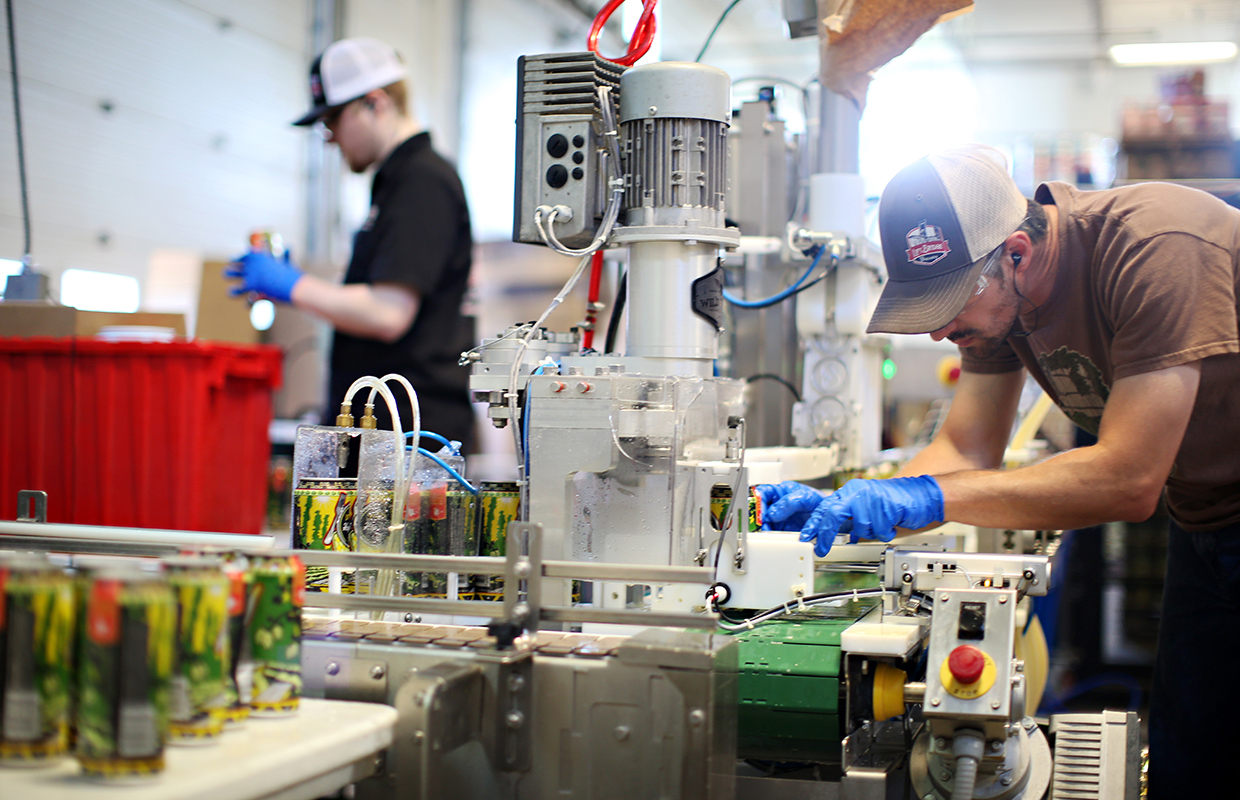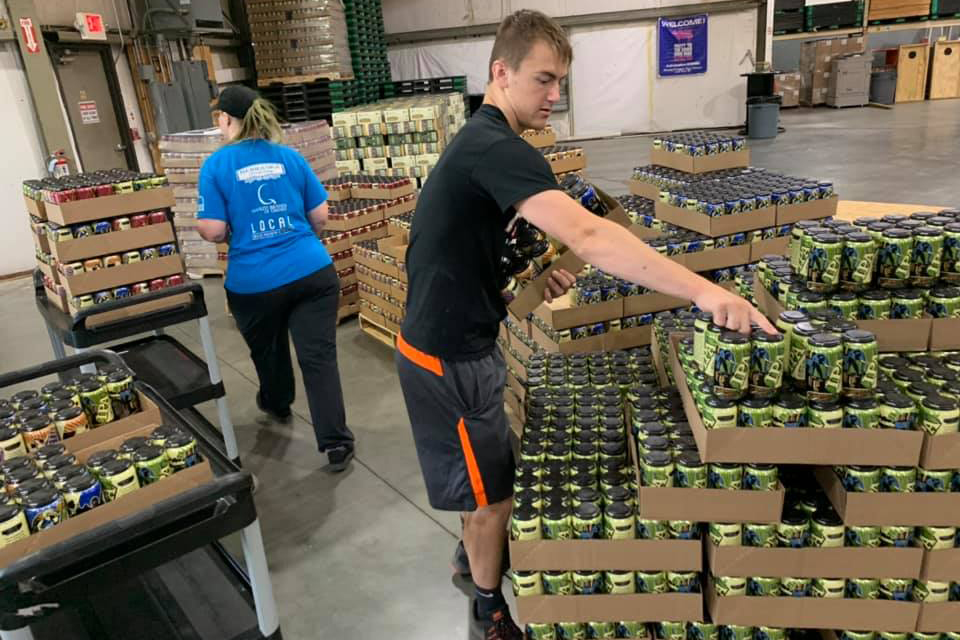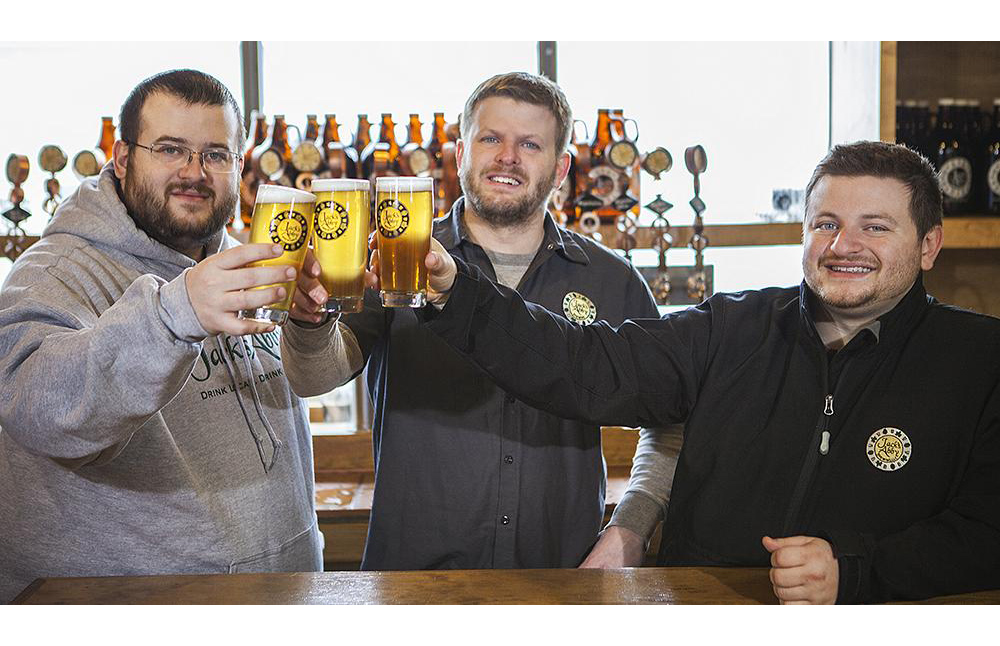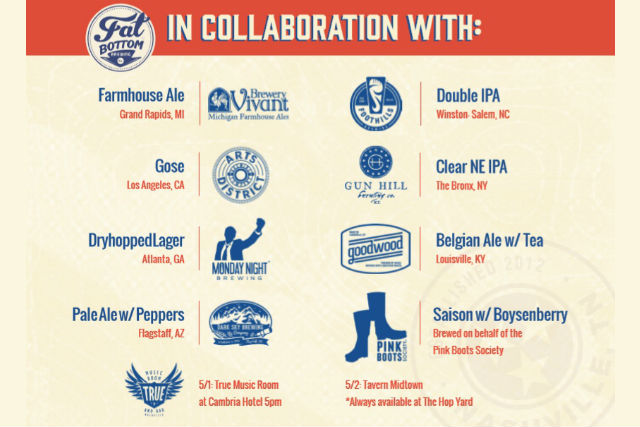
For Lift Bridge’s Dan Schwarz, contract brewing has been a part of the Minnesota brewery’s DNA from Day 1.
Starting by having its brands made at Flat Earth Brewery in 2008 to now being a veteran brewery that works with multiple smaller facilities to help them grow, all the while still contract brewing with places like Point Brewing and Summit, Schwarz knows his way around the contract brewing needs and wants from both sides of the production.
“There are a lot of moving parts to brewing just in general,” said Schwarz, Lift Bridge’s CEO and co-founder. “When you’re adding another group of people, the communication certainly has to be clear with clear delineation on who’s doing what.”
A decade ago, there was probably more of a stigma on contract brewing. Now, Schwarz thinks that has relaxed quite a bit.
“People care more about the quality of the liquid rather than where is it brewed or did the Brewery A help Brewery B’s beer,” he said. “It just seems like that’s kind of gone away.”
With more opportunity and less stigma, Urban Artifact has looked to grow via contract breweries as well.
“We took a lot of steps to get the business going and it almost crushed us the first two and a half years we were in business,” said UA’s Chief of Brewing Operations, Bret Kollmann Baker. “When we were looking at expanding, the whole problem was why are we going to do this ourselves again when we can just have somebody else make beer for us?”
Kollmann Baker said that breweries like Michigan’s Brew Detroit and Octopi in Wisconsin have established themselves as trusted companies that aren’t just a brewery with extra capacity looking to fill tanks.
“The stigma is mostly gone and they have a nicer facility that is bigger than us with the processes and ingredients we want,” Kollmann Baker said. “Why waste our time taking out a shitload of debt and then have to fill our capacity right away and instead grow steadily. Get the demand out there while not oversaturating the market and then if things go to hell in a handbasket — as they have — then we can just literally pull the plug on having our beer made and not worry about all the debt that could come with it.”
Kollmann Baker said a lot of the internal business discussions would focus on outsourcing a brewery’s business in all regards and how you can use your cash flow rather than capital expenditure in order to grow your business.
“I mean, there’s a reason why a company like GE and other big facilities in Cincinnati have like half of the workers are 1099 contractors.” he said “Because, at the end of the day, it cuts your risk down. And you can pay someone who has experience with your cash flow to do the work for you. If you need to get rid of them, you are not beholden to them.
“Is it great for the individual employee? Maybe not, but at least for craft beer, would you rather spend that money on a canning line or spend that money on other improvements or save space or whatever the case may be.”
Kollmann Baker added that the “homebrew/DIY” attitude has built this industry, but the industry is maturing and he feels this is a tactic used to grow your business and mature.
READ MORE: The Three Concepts in Contract Brewing
Whether you are looking to have your beer made by another facility, or your brewery has the capacity available to work with other breweries, Schwarz said getting what is needed in writing is paramount.
“Who’s ordering which materials,” he said. “You need to probably have a pretty good handle on your forecasting so you can let the host brewery know when you’d like beer, and what your estimation is for beer going forward, so they can schedule tanks and materials and people.”
Even having a really good recipe and a handle of your SOPs drawn up with your specifications, targets and tolerances need to be put down. Schwarz figures the best relationships are created when you have it all written down. That means taking time to think of everything like the length of storage after production; what happens if there is a bad batch and who is responsible; nondisclosure agreements; creating a sign-off on the beer before it gets put into packaging.
“I think those are always good things to have,” he said.
As a brewery that works with smaller facilities to contract brew as well, Schwarz said they ask for a 90-day rolling forecast.
“We [want to] know what their estimated volume is going to be,” he said. “Both those aren’t necessarily hard and fast. We can make some adjustments to them. But we use that as we’re planning our own production.”
When looking at contracting/outsourcing work, ask yourself these questions:
- What happens if you grow? What happens if you shrink? What happens if you want to cut the contract?
- What quality control standards are you holding them to?
- What repercussions do they face if there’s an issue? What about a recall, who’s liable for all that?
- How does insurance work? Am I on your permit or are you on mine? Am I responsible to your employees at all in any way?
“Think through logically everything they want to consider when you’re building this out,” Kollmann Baker said. “People may think contractor brewers do a shitty job or there’s negative stigma … yeah those are cons, but they don’t really exist as much anymore, especially if you are going with a great contract brewer. If you’re going to some brewery that said they built their brewery too big and have all this excess capacity, to me that is a huge red flag because what happens if they sell that capacity, guess who gets the boot? You, the person trying to get your beer brewed by them. How much are they really gonna care about your product if they are really focused on their brand first and then just doing this to fill capacity.”
That’s why places like Octopi & Brew Detroit and a couple of other places Urban Artifact looked at were so attractive to them.
“We are their business and they care about us,” he said.
Many times, Lift Bridge has entered into an Alternating Proprietorship agreement to have its beer made elsewhere.
“There’s kind of two big reasons for that,” Schwarz said. “One is the taxes go on your own volume.”
Since Lift Bridge makes less than 50,000 barrels, it’s in another tax bracket than Summit, which is over 50,000 barrels per year.
And from a labeling standpoint, Schwarz said if you have an Alternating Proprietorship, every place has a declaration of where the beer is brewed and packaged.
“You can use any of your locations for that,” he said. “Even if we’re brewing in St. Paul it still can say Stillwater, Minnesota, for example.
“When you’re doing contract, that has to state the location of the host brewery.”
All the beer that Lift Bridge has brewed for other people has been just as a contract.
The reason AP agreements are a tad harder to get done is there is a paperwork process that has to be filed with the TTB, Schwarz pointed out.
“That can take a long time, anywhere from 90-180 days, to get those completed,” he said. “You’re going to want to make sure you have a long-term relationship if you do that.”
For the most part, the operational aspects are pretty much the same as a contract brewing agreement. Even with an AP agreement, having another team of brewers take over your space isn’t ideal.
“It can be just a little concerning to potentially just throw them the keys and say, ‘Here have fun,’ because there’s a lot of ins and outs on running brewhouses,” Schwarz said. “You want to make sure that it’s operated safely and efficiently and you’re getting that quality product out.”
Contract brewing in-house at Lift bridge is a small percentage, and for now, they plan to keep it pretty low. But the brewery does have some excess capacity on the smaller tanks.
“In Stillwater, our brewery is a 15-barrel brewhouse and we have 30- and 60-barrel fermenters,” Schwarz said. “Our building’s maxed out, and we’re landlocked.
“We find that the batch sizes that we typically need are either 30 barrels or 300 barrels, depending upon the brand. So that’s where Summit comes in real handy. Their sweet spot is 150 barrels and up.
So it’s worked out really nice to keep the 60-barrel tanks full by working with other companies to help keep the Lift Bridge staff brewing and helping some other brewers out as well.
It’s probably no surprise that the profit margin is not as good as it is when you’re brewing your own brand. Schwarz said it is a blended margin, and it also helps cover some of that overhead. “It’s not doing any good with tanks sitting empty, or the team’s idle,” he said. “But certainly there is some margin to be made. I think it’s a good way to keep some alternative revenue streams besides just your own brands.”
Just make sure you go in with eyes wide open.
“There’s some additional administrative work, certainly,“ Schwarz said,“ there’s going to be more communication that you’re going to have with the host brewery. I think you want to have some experience or commit to it from a staffing and time perspective.
“You want to make sure that you have good solid processes yourself, before you bring somebody in, and try to brew their beer. If you mess up somebody else’s product, they’re gonna be looking at you for making it right.“
Photo courtesy Lift Bridge Brewery




Be the first to comment